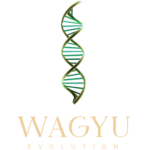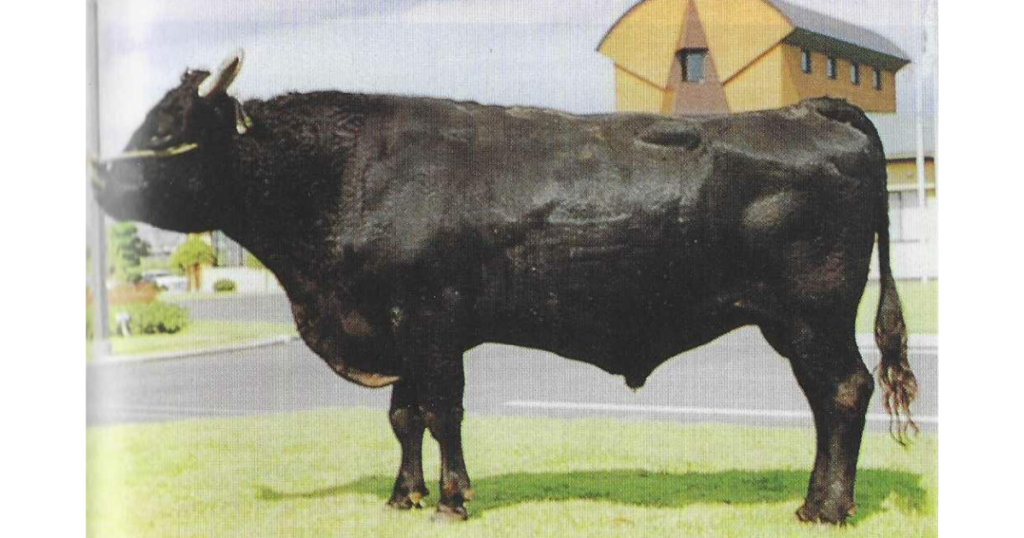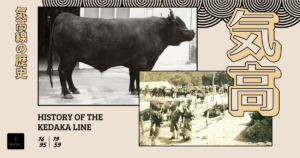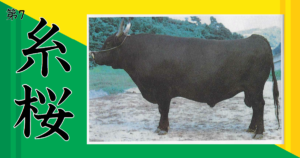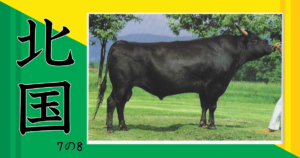Kamitakafuku: The Representative Offspring of Tadafuku
Table of Contents
* Note: This is not a direct translation of Kenichi Ono’s “Top 100 Famous Beef of Japan [Revised Edition]” but a summary that was written using it as a direct source.
Early Life
Kamitakafuku was born on July 23, 1981, as the sixth offspring of his mother Megumi, who was known as a “super cow.” He was the first candidate as a breeding bull from Tadafuku’s offspring. His brother, Shōgi No. 2, Megumi’s fifth offspring, was exhibited as Kagoshima Prefecture’s representative in the fattening division at the 4th Zenkyo (All-Japan Wagyu Competition) held in Fukushima Prefecture the year after Kamitakafuku’s birth. At 25 months old, Shōgi No. 2 achieved a carcass weight of 441.5 kg, a daily gain of 0.94 kg, a loin eye area of 49 cm², a marbling score of +5, and received the top-grade special selection (under the old system), earning first place.
The other three fattened brothers also achieved exceptional results, with two earning special selection and one receiving the top grade. Despite being born in a location that does not have a breeding cooperative, Kamitakafuku was selected as a breeding bull based primarily on the excellent meat production performance of his siblings.
The producer of Kamitakafuku was Kunihiro Kamizono, and the bull’s name, “Kamitakafuku,” was derived from combining one character each from the producer’s name, the name of the town (Kamizono), and his father, Tadafuku.
Since the creation of Kamitakafuku, Kagoshima Prefecture has been at the forefront of breeding bulls nationwide, combining meat production performance in the offspring of female cows with embryo transfer (ET). As a result, bulls such as Hōsei, born in 1988, Katsumi, born in 1990, and Chūshige, Shinsuke, and Kōfuku 1, born in 1991, have been selected.
Kamitakafuku has been highly active as Tadafuku’s successor since the beginning of his use, with over 157,000 inseminations by the end of Heisei 7 (1995), and more than 110,000 calves registered. In Heisei 8 (1996), about 30,000 straws of his semen were distributed.
Features
Strengths: Balanced body conformation, good weight gain, desirable meat color, robustness, early maturity, wide shoulders, and high meat yield
Weaknesses: Short body length, low body height, slight influence from the maternal line, and somewhat nervous temperament
The offspring of Kamitakafuku have an ideal box-shaped body with deep conformation, which is desirable for beef cattle. They are also known for their high meat yield and lack of excess fat. However, as breeding cattle, many have shorter body lengths and lower body heights, making it difficult to select them as breeding stock unless the maternal line of the mating cow compensates for these traits.
Kamitakafuku’s indirect test values (average) from 1986 were as follows:
- Weight at the end of the test: 624 kg
- Carcass weight: 382 kg
- Daily gain: 1.01 kg
- Marbling score: +3.5 (under the old system)
- Loin eye area: 51 cm²
- Subcutaneous fat thickness: 1.6 cm
Pedigree Background
Kamitakafuku’s father, Tadafuku, was a representative bull from the early Anbidōi line and was a contemporary of the An’yadōi bull. Among the offspring of Anbidōi, Tadafuku was particularly noted for his excellent weight gain, good body conformation, and robustness, traits that were well inherited by Kamitakafuku.
The maternal line, Hotoku, descended from the famous bull Eiko’s son, Masuhiro. Hotoku’s father, Hōshun, was a notable bull in the late 1960s and became the foundation of Kagoshima Wagyu. Although Hotoku’s abilities were sometimes inconsistent, in Kamitakafuku’s case, the positive traits were strongly expressed. The third-generation ancestor, Toka, was a son of the Shimomae line’s Daikichihana, a breeding bull that was highly active in Kagoshima during the 1960s.
Major Successor Bulls
- Katsumi (Kagoshima Prefecture)
Katsumi, the first successor bull of Kamitakafuku, did not have particularly outstanding BMS results during the indirect test, but his subsequent field test results were excellent, making him a key breeding bull in Kagoshima Prefecture.
- Kōfuku 1, Shinsuke, Katsutaka, Fukushige (Kagoshima Prefecture)
These are all evaluated bulls whose indirect tests were completed in 1996. All four bulls were developed as brothers of cattle with excellent fattening results and are promising bulls for the future.
Points to Consider for Breeding
Both Tadafuku and Kamitakafuku are not bulls that achieve greatness solely on their own merits but rather excel due to their compatibility with the maternal lineage. When breeding with cows that have low breeding value, there is a risk of a significant decline in performance. Ideally, the breeding partner should have a high breeding value for marbling, with A-rank cows from the Kedaka line or Itosakura line being the most suitable partners.
To capitalize on the strengths of the Tadafuku line, such as robust health and thick loin eye area, it is ideal to improve regions where cattle tend to be weaker and have narrow shoulders. This can be achieved by exchanging some of Kagoshima Prefecture’s breeding bulls with those from other prefectures, which could contribute to raising the overall level of Japanese Wagyu nationwide.
References
小野健一. 日本名牛百選〔改訂版〕(pp.99-106). 肉牛新報社.
